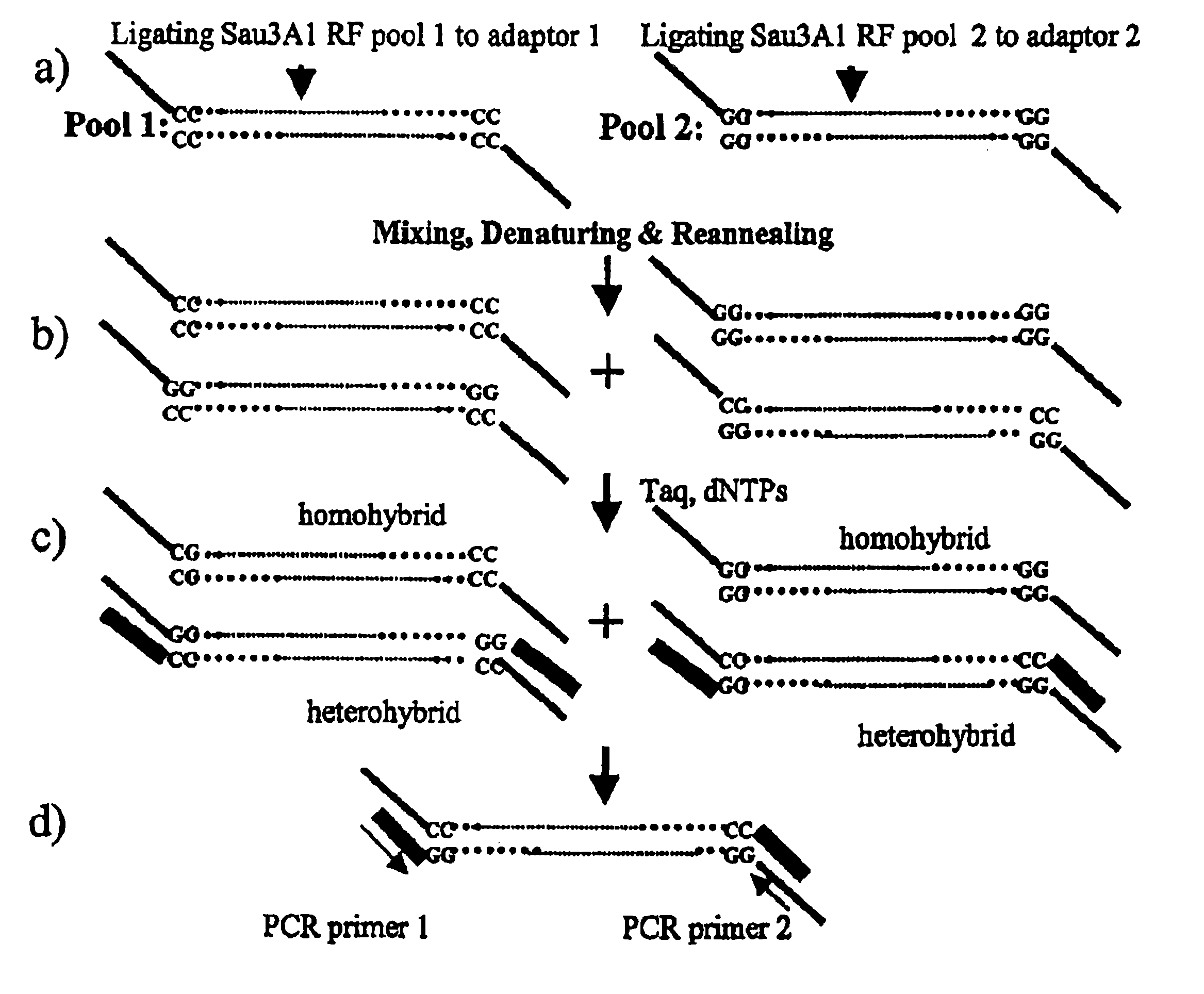Methods for identifying genes associated with diseases or specific phenotypes
a technology of specific phenotypes and genes, applied in the field of genetic mapping and also genetic variation or mutation screening, can solve the problems of not meeting the requirement of genome coverage, few excellent examples of using these techniques to map a typical complex disease, and many obstacles, etc., to achieve high specificity and sensitivity
- Summary
- Abstract
- Description
- Claims
- Application Information
AI Technical Summary
Problems solved by technology
Method used
Image
Examples
experiment 1
[0111]Test to separate mismatched from matched DNA duplexes. A perfectly matched duplex formed with synthetic 60 nt oligonucleotides (PM1 annealed to PM2) and a 76 bp duplex containing a G / T mismatch (MM1 annealed to MM2) were mixed together as the starting template mixture. These were labeled on the 5′ end with 32P using PNK obtained from New England Biolabs using the manufacturers suggested protocol. These were loaded onto a 0.1 ml column of immobilized hTDG or mTDG. With the steps of binding, washing and eluting, the 76 bp and 60 bp fragments were separated at different optimized conditions: the perfectly matched fragment passed through the column and were further specifically washed off (4 steps of washing). The mismatch fragment was retained in the column, and then eluted with two 1 ml washes. Fractions from different steps were collected, purified, and loaded onto an 8% sequencing gel. The concentration of matched or mismatched duplex in each fraction was determined by the lev...
PUM
| Property | Measurement | Unit |
|---|---|---|
| concentrations | aaaaa | aaaaa |
| affinity | aaaaa | aaaaa |
| temperature | aaaaa | aaaaa |
Abstract
Description
Claims
Application Information
 Login to View More
Login to View More - R&D
- Intellectual Property
- Life Sciences
- Materials
- Tech Scout
- Unparalleled Data Quality
- Higher Quality Content
- 60% Fewer Hallucinations
Browse by: Latest US Patents, China's latest patents, Technical Efficacy Thesaurus, Application Domain, Technology Topic, Popular Technical Reports.
© 2025 PatSnap. All rights reserved.Legal|Privacy policy|Modern Slavery Act Transparency Statement|Sitemap|About US| Contact US: help@patsnap.com



